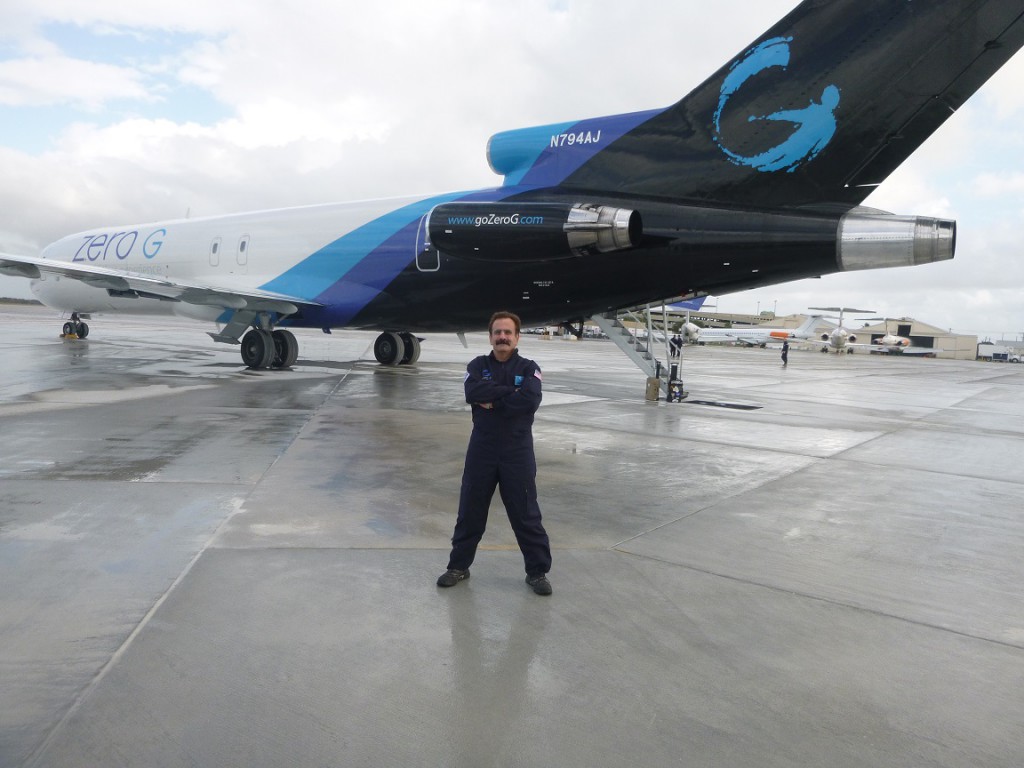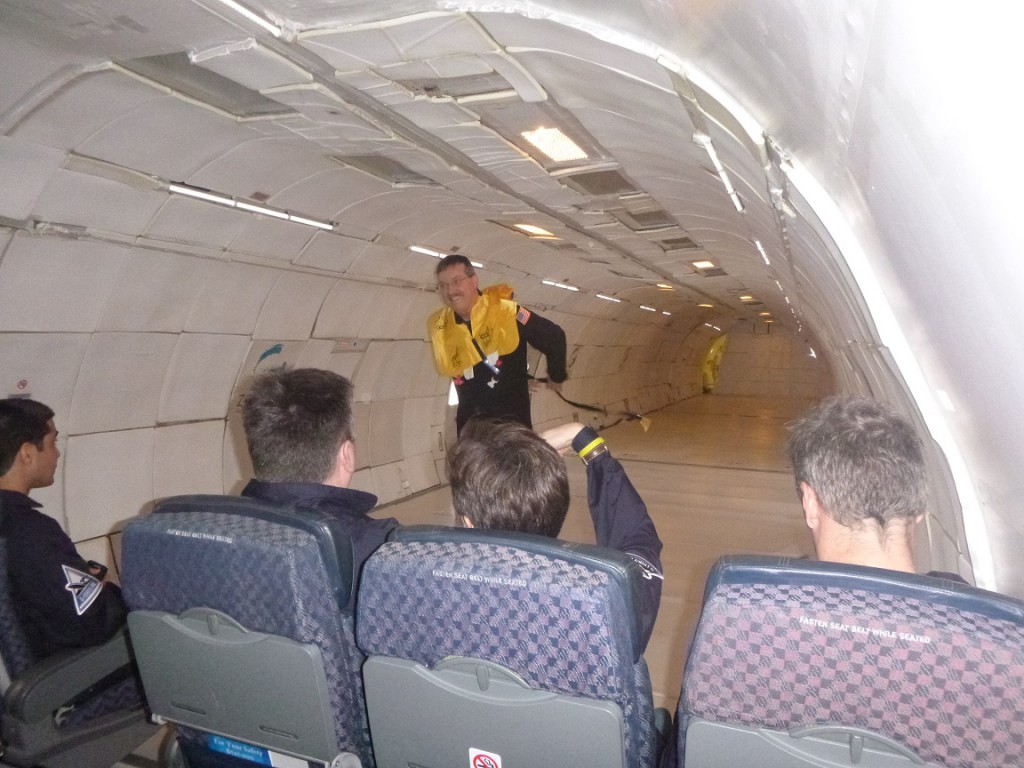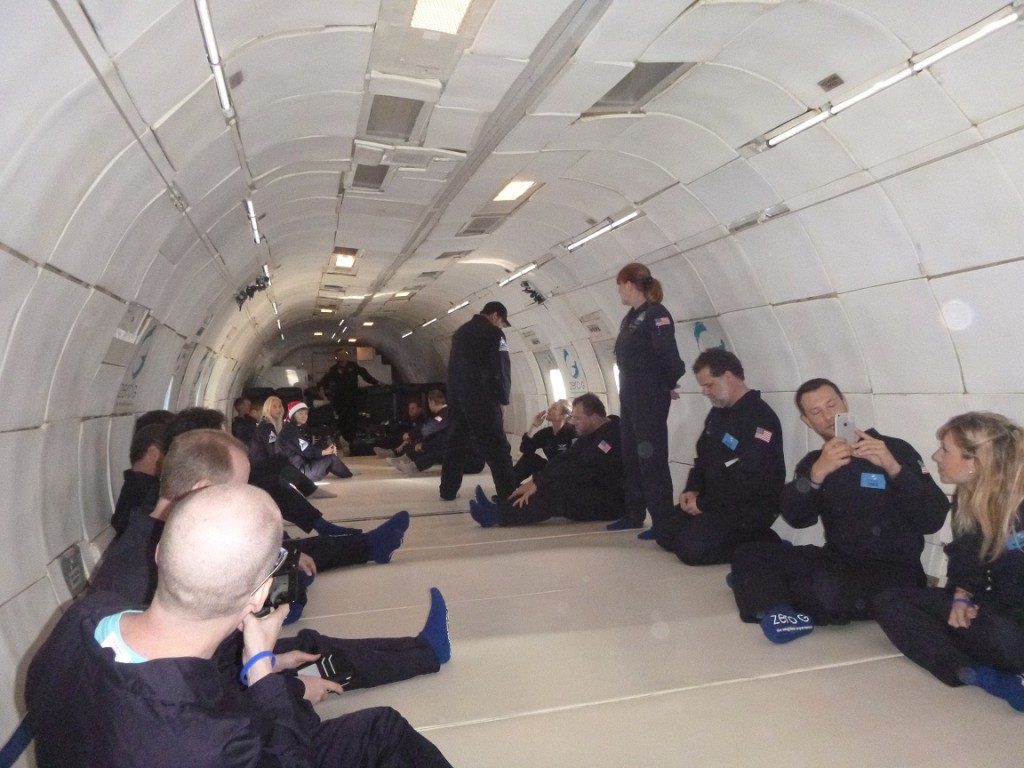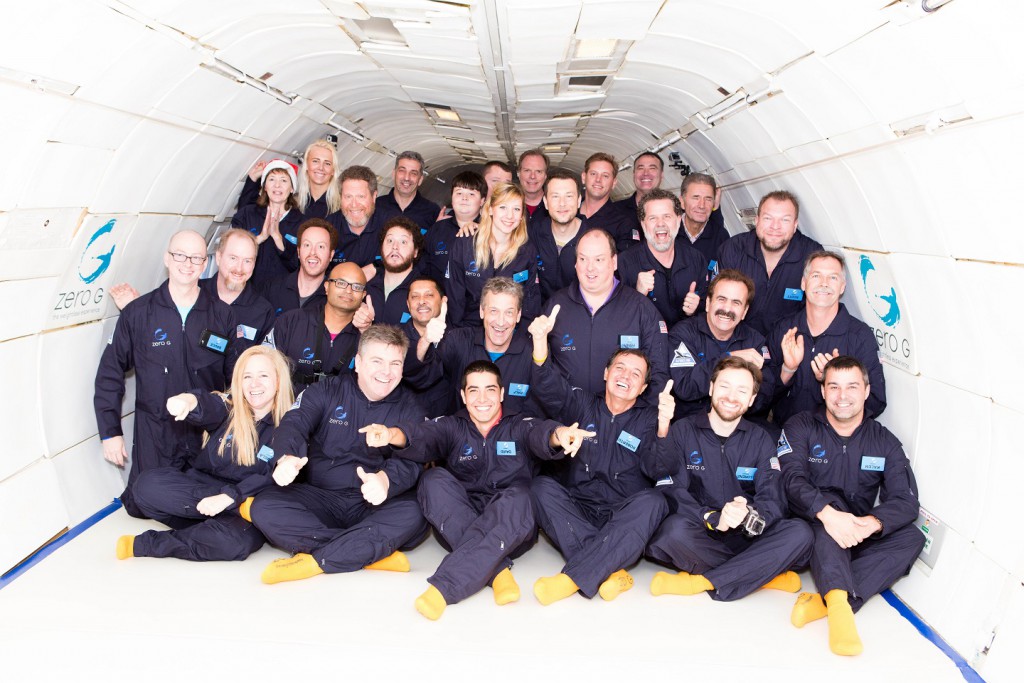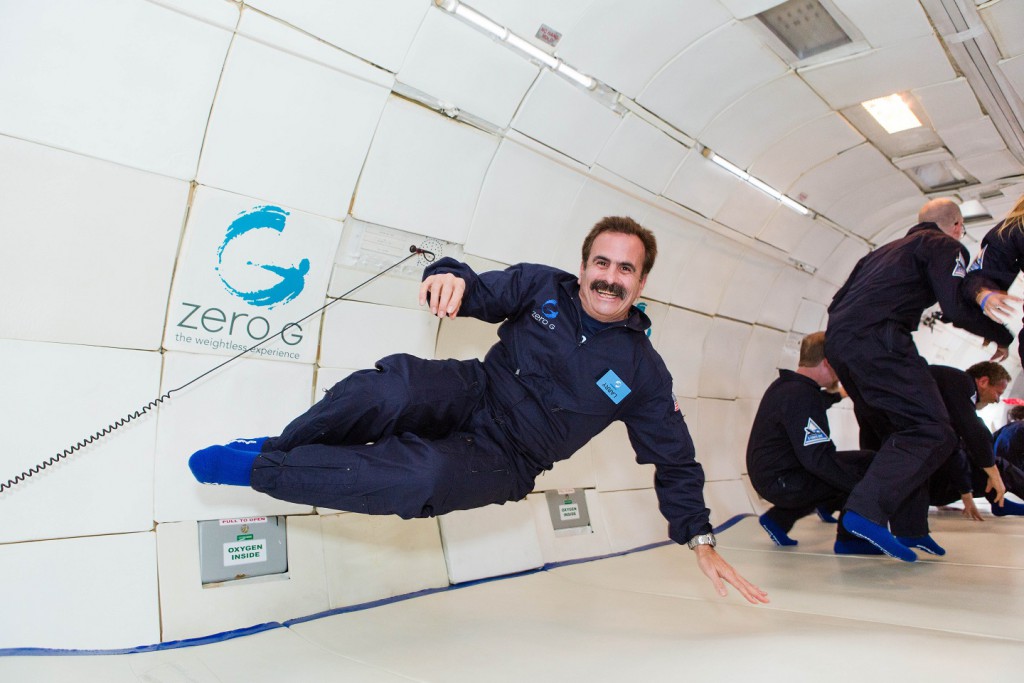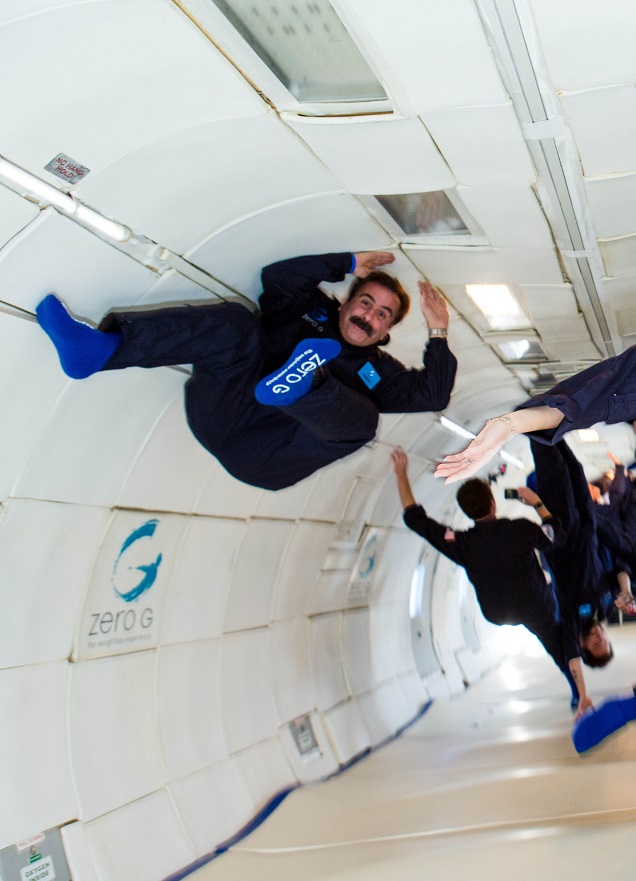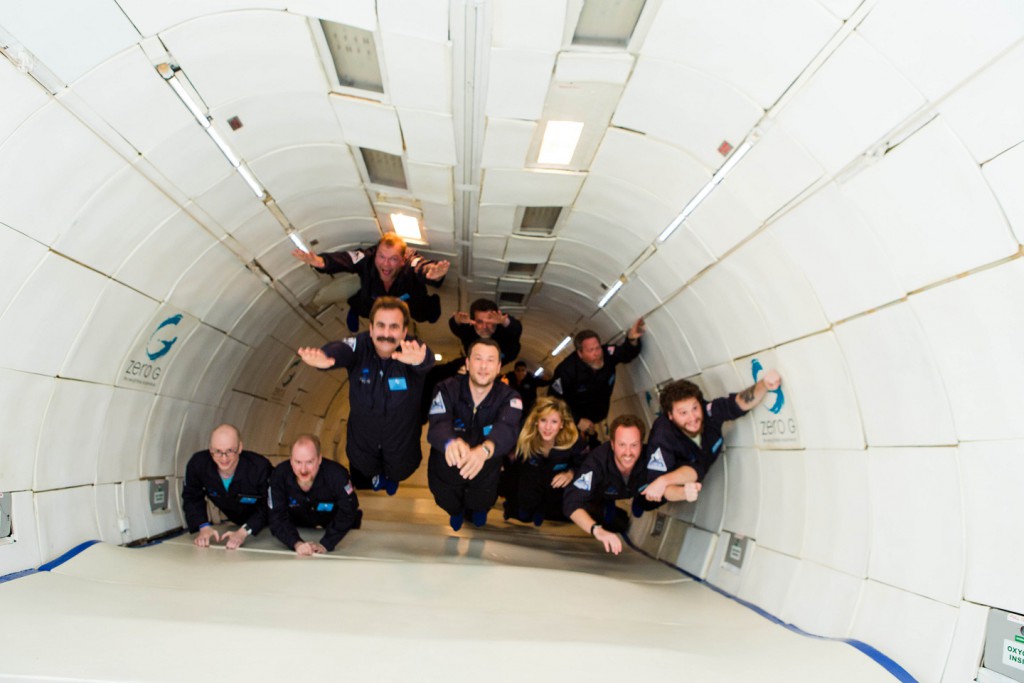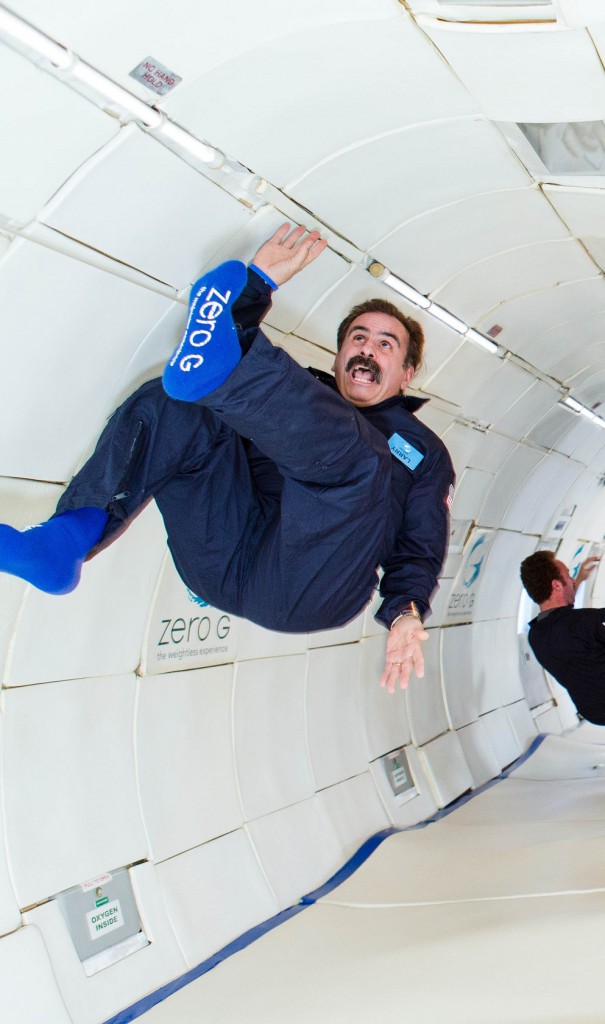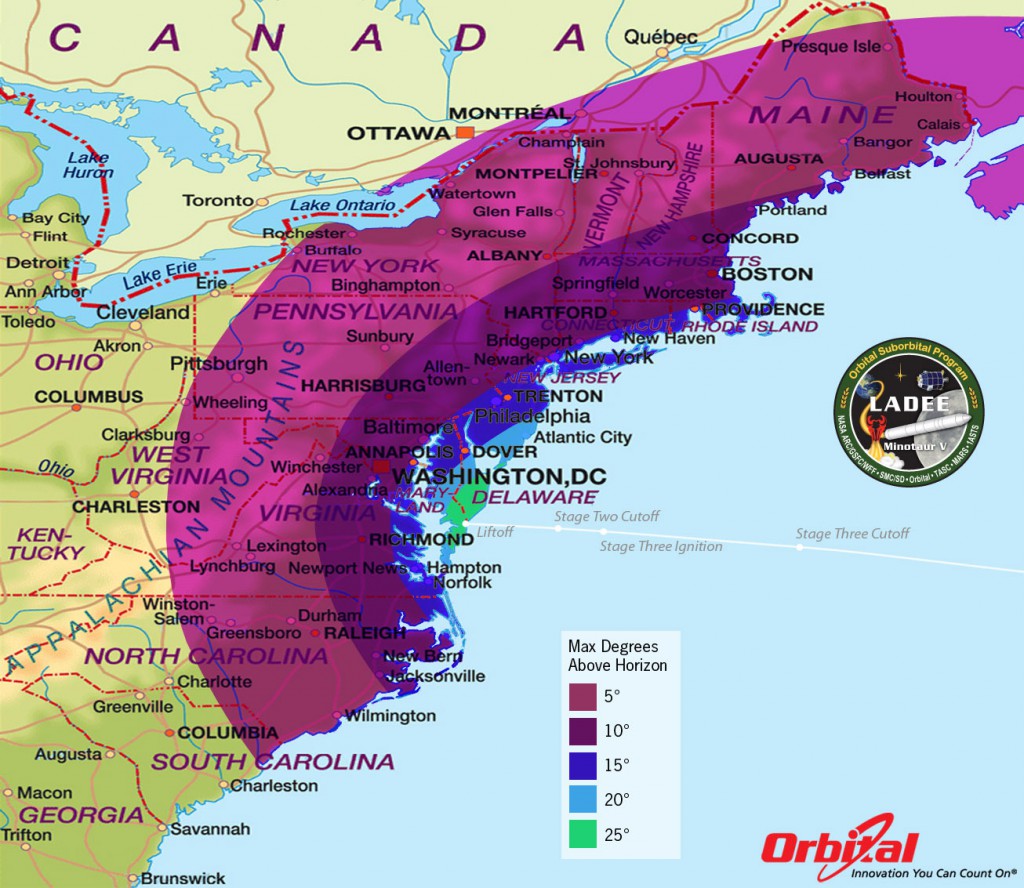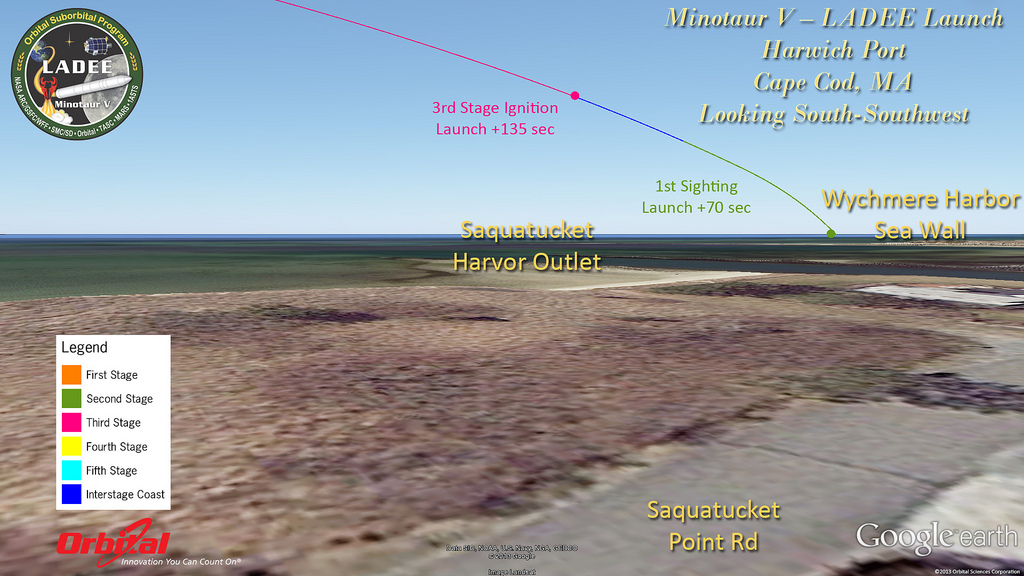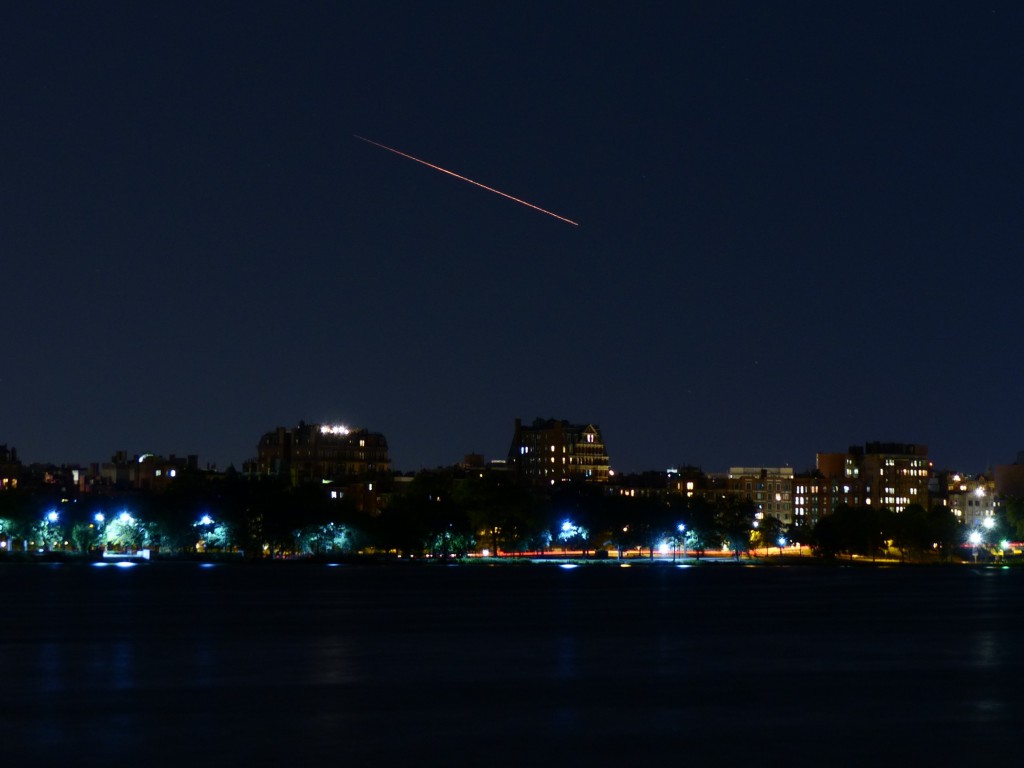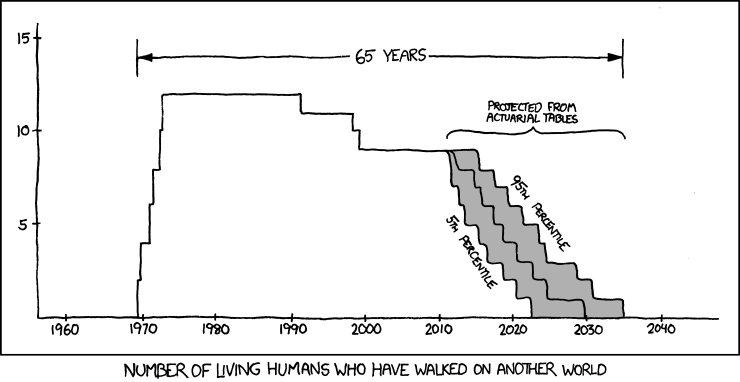Well, it really was the next best thing to space travel – a total of about seven minutes of weightlessness on board G-Force One, a modified Boeing 727 owned by the Zero Gravity Corporation.
For these unfamiliar, the plane flies a series of parabolic climbs and dives; as you come over the top the plane follows the path your body would if it was freely falling, and you just float off the cabin floor. Of course, you have to give it back at the bottom of the arc, where things get very heavy.
The folks who put this together have been doing it for ten years, and it shows. They managed to find the perfect amount of pomp and circumstance to make it fun, without going too far and making it hokey. I was issued a spiffy blue flight suit, with my name velcroed on, but upside-down. Later, it was revealed that turning it right-side up would be part of the post-event activity – a custom borrowed from the astronaut corps.
My fellow passengers ranged in age from their 30s to their 60s (plus a 12-year-old with his dad), and hailed from places as far away as Gemany, Denmark, England, and Columbia.
An airspace conflict delayed our departure for several hours, but we eventually headed out to the airport, paused for a photo op or two, boarded, and launched.
There’s really not a whole lot that can be said or done to either prepare for or describe the experience – it really is unique. If there’s a ‘trick’, it’s to relax and enjoy (something I wasn’t very good at). You want to try to control your motion, but that’s pretty much impossible. There were a few recommendations I attempted with varying degrees of success, but mostly it was float around and go wherever it takes you. If you bump into someone, it will be at low speed – “sorry – oops”, and you’re on your way. I did manage to grab a mouthful of water globule in midair, but I attribute that more to my coach throwing it in the right direction than any skill on my part. I was less successful trying to catch Skittles I’d launched on my own. One thing I did succeed at a few times was the ‘crawl’ – you walk on your hands up one wall, across the ceiling, and down the other side. The zero-G portion of each parabolic loop lasts about 30 seconds, and as it’s coming to an end they announce ‘Coming Out – Feet Down!’ I remember a few time thinking “Okay, but which way is down?” But they come out gently, and pretty soon you’re on the floor, and just have to find a position where you’re not bumping into another participant.
The 15 parabolas they flew were nowhere near enough. On the other hand, they said they chose 15 because after that is when it starts affecting newbies negatively. In our group, 2 out of 28 or so wound up sitting it out – sad, given both the expense and travel involved; one each male and female, unrelated, both from overseas. As for me, the only negative physiological effect I experienced was an ache in my jaw from grinning so much! The entire group was giddy, and there was a crowd-multiplication effect going on – the laughing, smiling, shouts of encouragement and so forth were continuous.
After the last parabola, we were all able to pad around the cabin for the next 20 minutes or so, a portion of which I spent helping my coach clean up the spilled Skittles. After that we were told to head to our seats and buckle in for landing.
All in all, the experience was perfect, except that it didn’t last long enough. They’ve got a frequent flyer discount, and though it’s utterly unjustifiable, I’m tempted. With what I learned the first time, I think I’d be able to get more out of a rematch.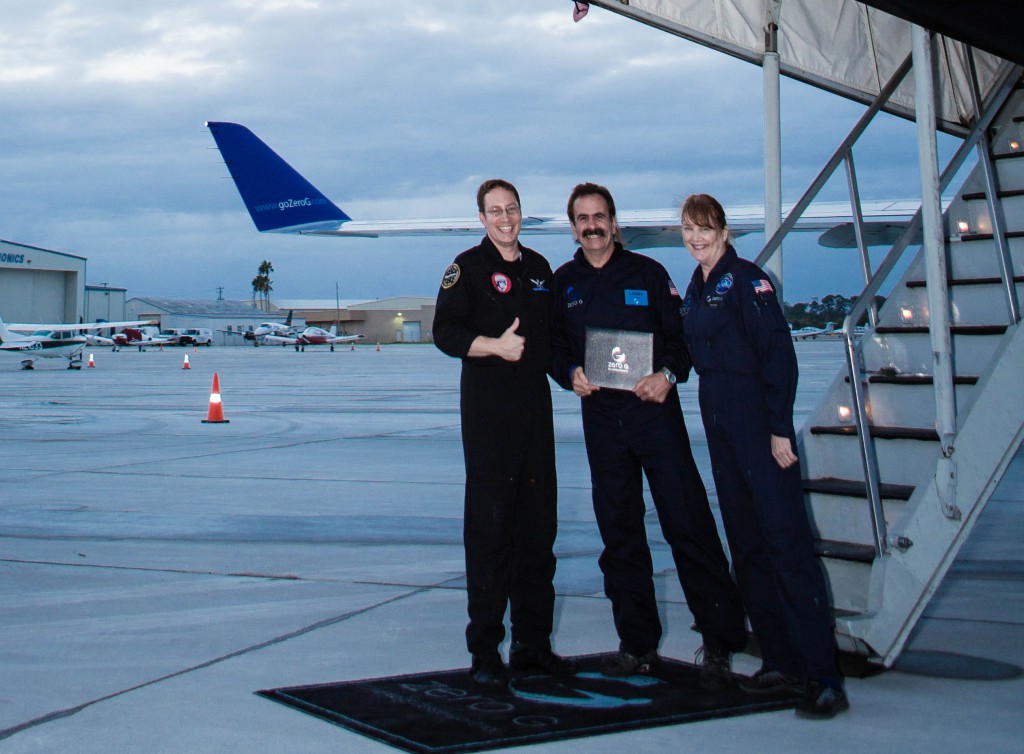
Your mileage may vary, but if your constitution and budget permit I’d definitely say go for it. The Ride (and I’m not talking about the one in the airplane) is too damned short.
Update – as promised, they released the video from the six GoPro cameras that were recording the action:

